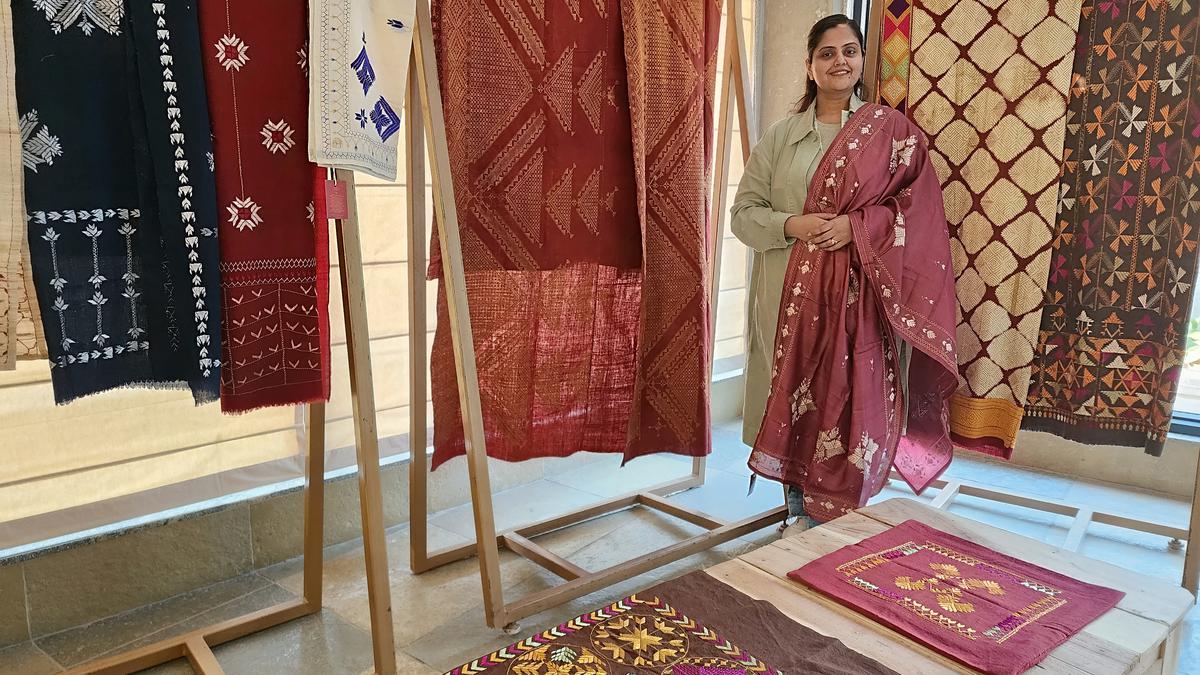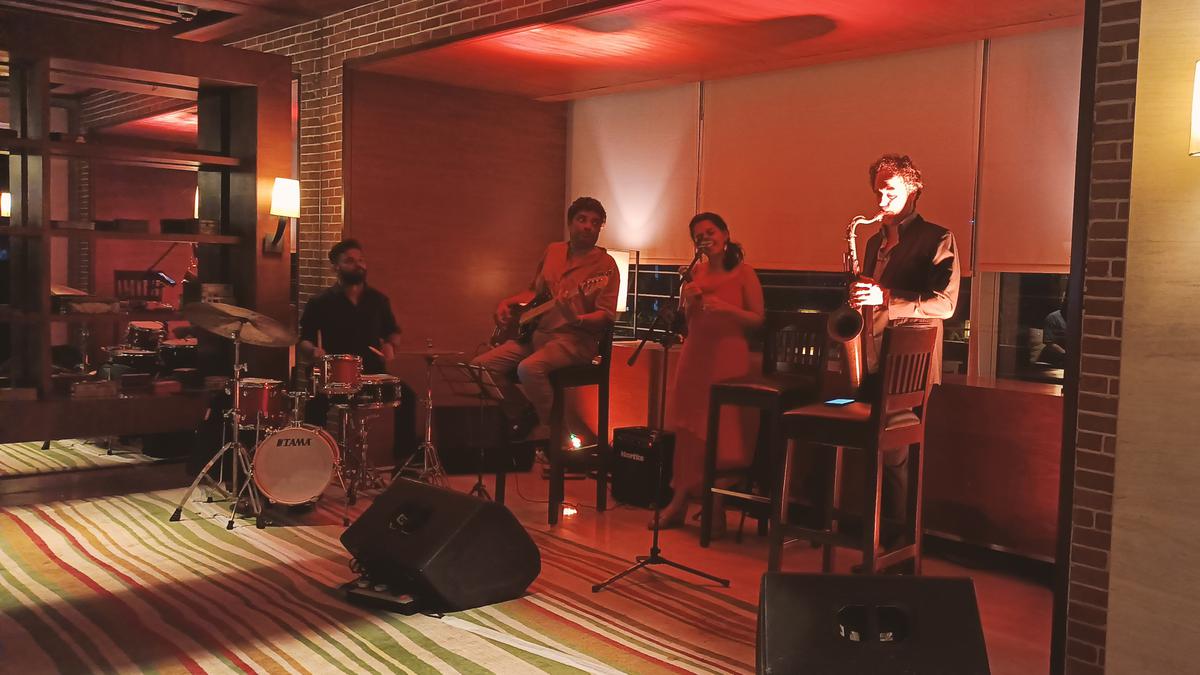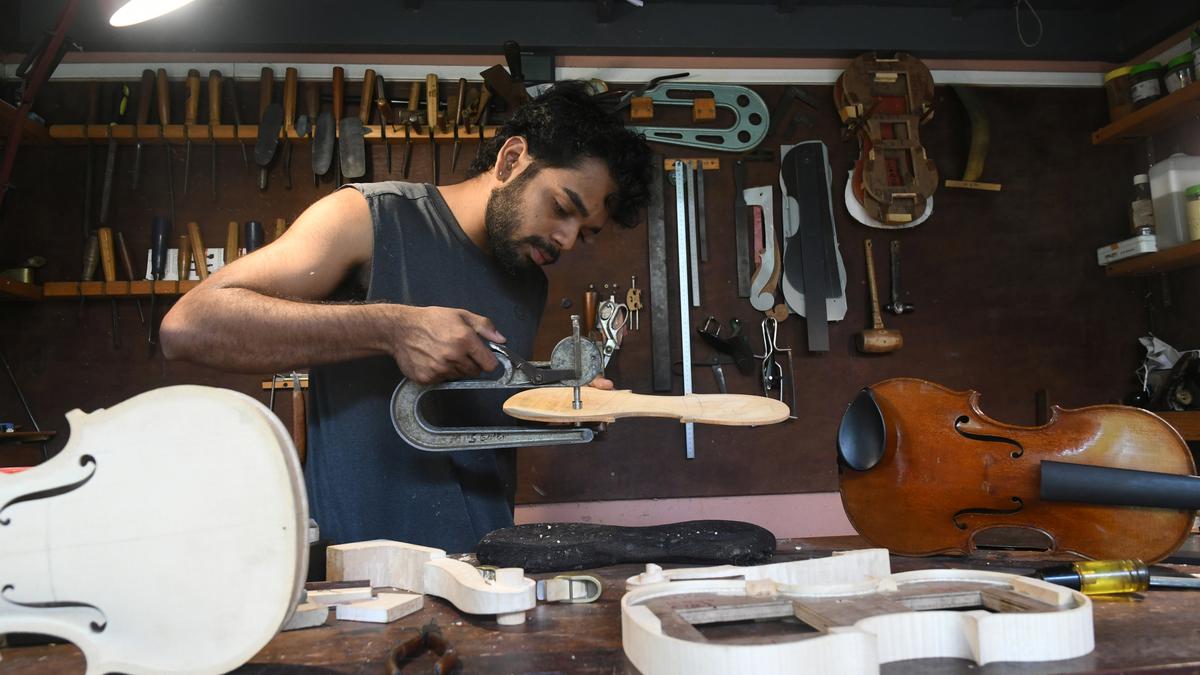Gurvinder Kaur Gundev displays fabrics with phulkari
| Photo Credit: Special arrangement
Craftspeople from across India met on the Crafts Council of Telangana (CCT) premises in Hyderabad for the CCT Sanmaan 2023 on Thursday. The council presented awards to a handful of deserving artisans at state and national levels.
A common factor that binds the award-winning craftspeople is their pride in returning to heritage techniques, which they think had been diluted by some of their contemporaries in a bid to capture the market by making products at a quick pace. Speaking to The Hindu, some of the awardees explained why they believe in time-tested techniques and slow fashion.
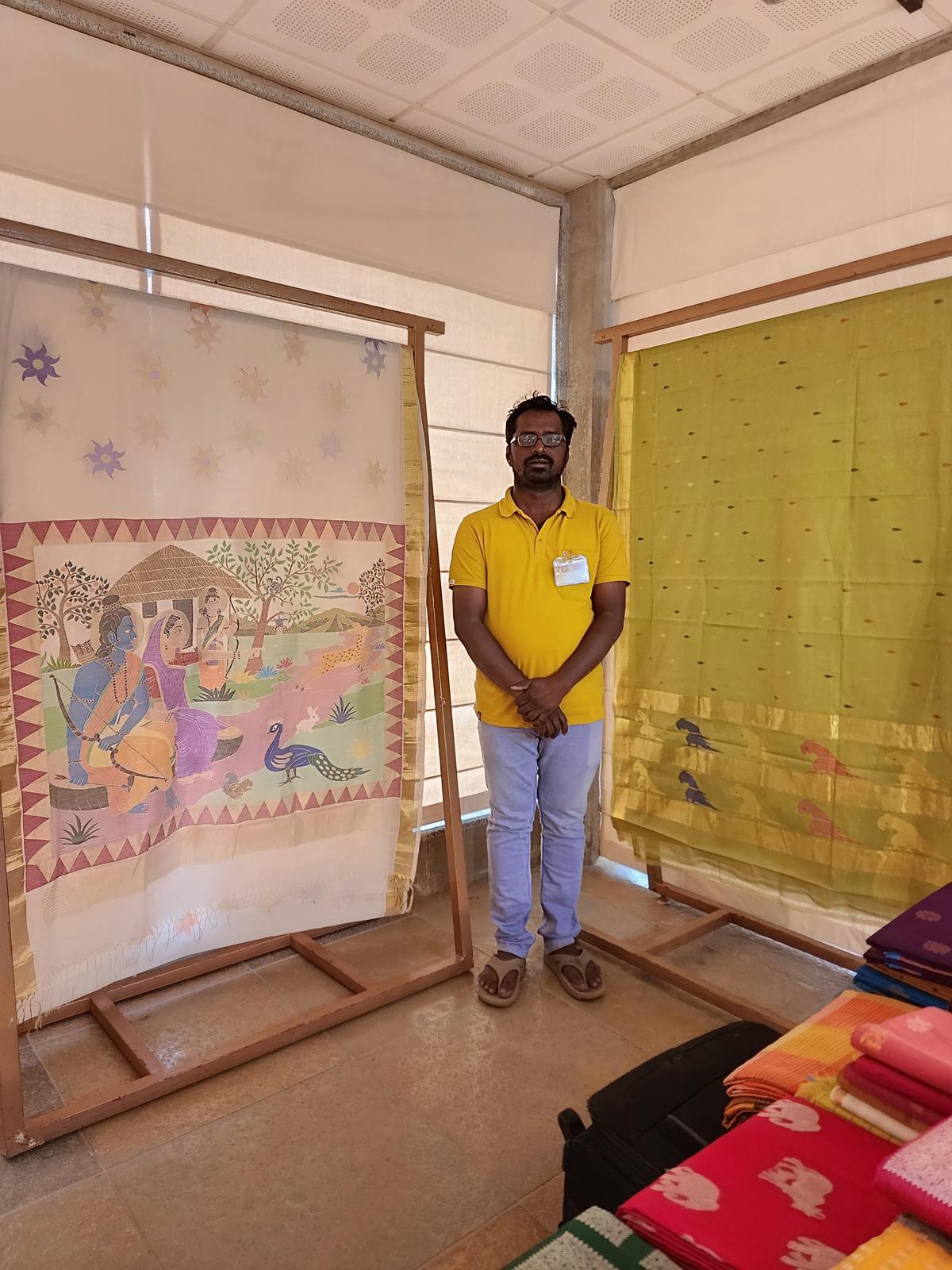
Patnam Subramanyam of Venkatagiri
| Photo Credit:
Special arrangement
Patnam Subramanyam is a third-generation handloom weaver from Venkatagiri. His grandmother had taught her family members to weave and he and brothers continue the Venkatagiri jamdani tradition. Subramanyam recalls how his parents and grandparents wove elaborate jamdani motifs and named them after movies of the era. “They wove several saris, and the designs were a hit. Many weavers don’t make intricate patterns (inspired by nature and mythology) anymore. They prefer simple motifs since more saris can be woven.”
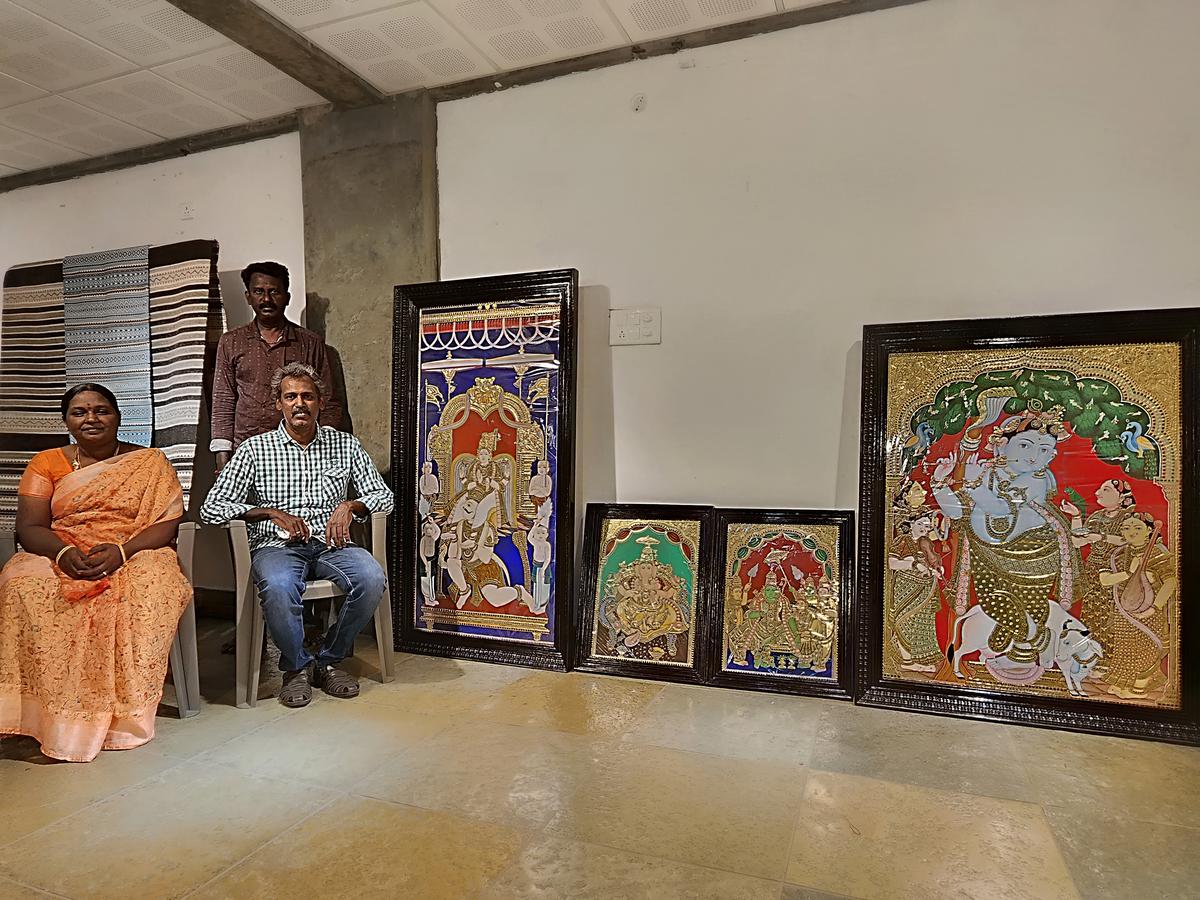
C Natarajan and Thillaikarasi display Tanjore paintings
| Photo Credit:
Special arrangement
Chennai-based C Natarajan, a Tanjore-painting artist for over three decades, shows his fine drawings, some of which become the ‘corner designs’ that frame the central deities in his paintings. “The masters of Tanjore paintings, including my ancestors, worked on such drawings. The sculptures and murals in temples become my design inspiration and each painting is unique. .” Natarajan has worked on a mural designed and executed by Anamika V and N Ramachandran for Mumbai airport’s T2 domestic terminal. Some of his murals also adorn the craft wall on CCT premises.
A quest to find phulkari embroidery like the ones that were handed down from her great-grandmother made Delhi-based Gurvinder Kaur Gundev work with artisans in Nabha near Patiala. “The older technique had the artisans counting each thread of the warp and the weft and stitching the pattern, with no design catalogues to refer to. Phulkari was done on good quality cotton and not polyester-blend fabrics. The thread count embroidery method is still followed by kasuti artisans in Karnataka and suf embroiderers in Gujarat, so why not phulkari?” A Ph.D scholar, her phulkari work was displayed at the National Museum, New Delhi, to commemorate 75 years of India’s Independence. Apart from wearable phulkari, she also designs wall pieces for interiors.
Other awardees
Jaya Jaitly, founder of Dastkari Haat Samiti: Lifetime achievement award.
Thangajothi C: For using natural fibres from screwpine, pineapple, palm leaves and samba grass to make baskets and other items.
Gajam Madhavi: Ikat handloom weaving.
Atish Chavan of Kalapuri Foundation: Works with craftspeople designing Kolhapuri footwear, jewellery, baskets and bags.
Subhash Poyam: Bastar metal craft.
Nagarjun Madavi: Dokra artisan from Adilabad.
Taher Siddiqui specialises in contemporary bidri
| Photo Credit:
Special arrangement
For Hyderabad’s Taher Siddiqui, the challenge was to make the bidri craft viable in a contemporary scenario. His grandfather Gulam Gaffar Siddiqui used to create bidriware for the Nizams. Taher and his team design bidri products for interiors — door handles, door knobs, coffee tables, panels and room dividers. “There has to be more than flower vases and jewellery boxes. My father initiated the idea of making bidri products for corporate gifting and I extended it to interior designing.”
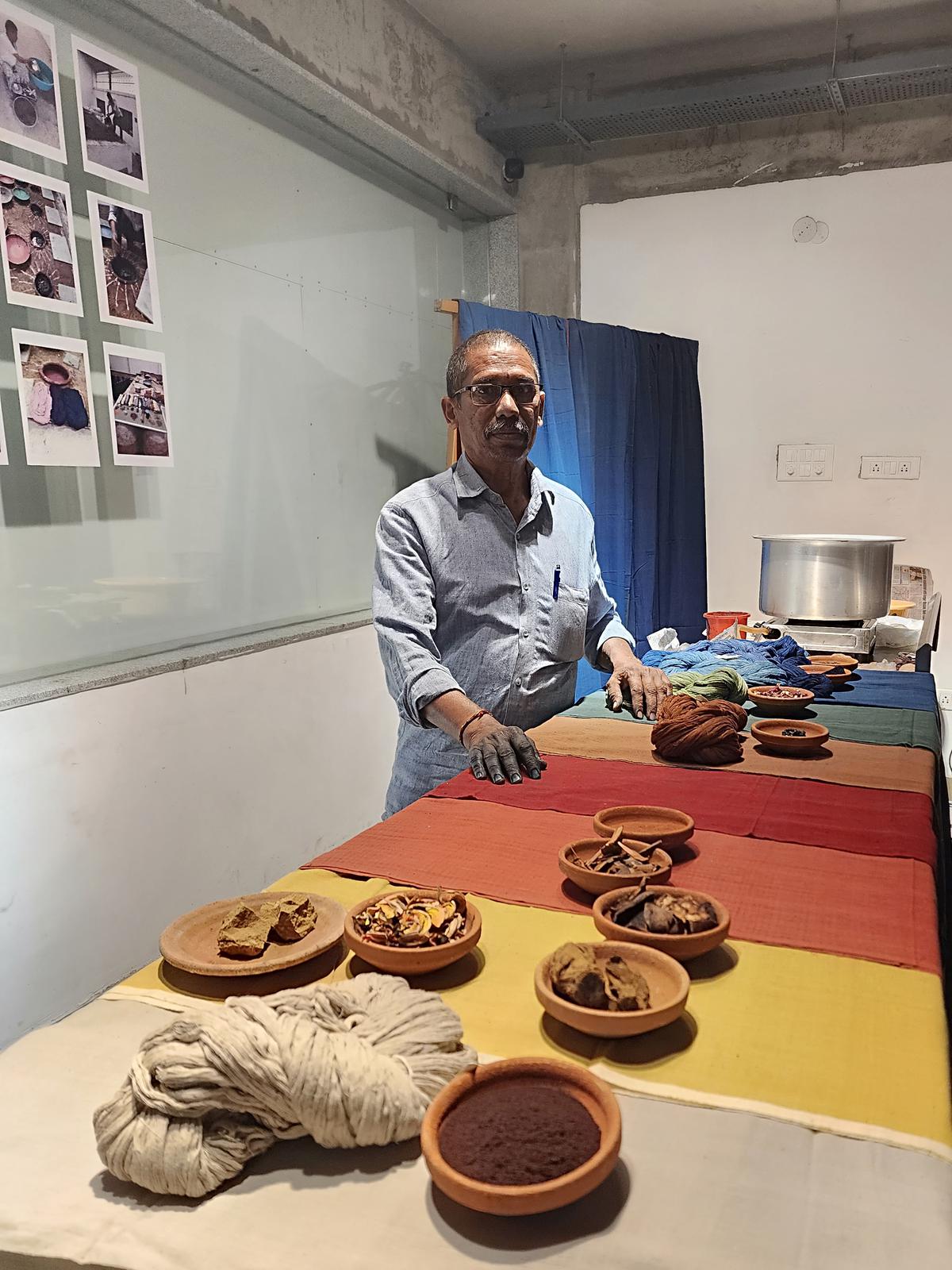
Odelu Vurugonda demonstrates indigo dyeing
| Photo Credit:
Special arrangement
Odelu Vurugonda from Adilabad began work as a weaver when he was 16 years old and is now sought after for the natural dyeing of textiles. Demonstrating the steps of indigo dyeing with a vat on CCT premises, he explains how he learnt dyeing under the guidance of Uzramma and Annapoorna of Dastkar Andhra. Now based in Chennur, he says, “I do not know how to extract colours from chemical sources; I understand natural dyes and they are safe on the skin.”
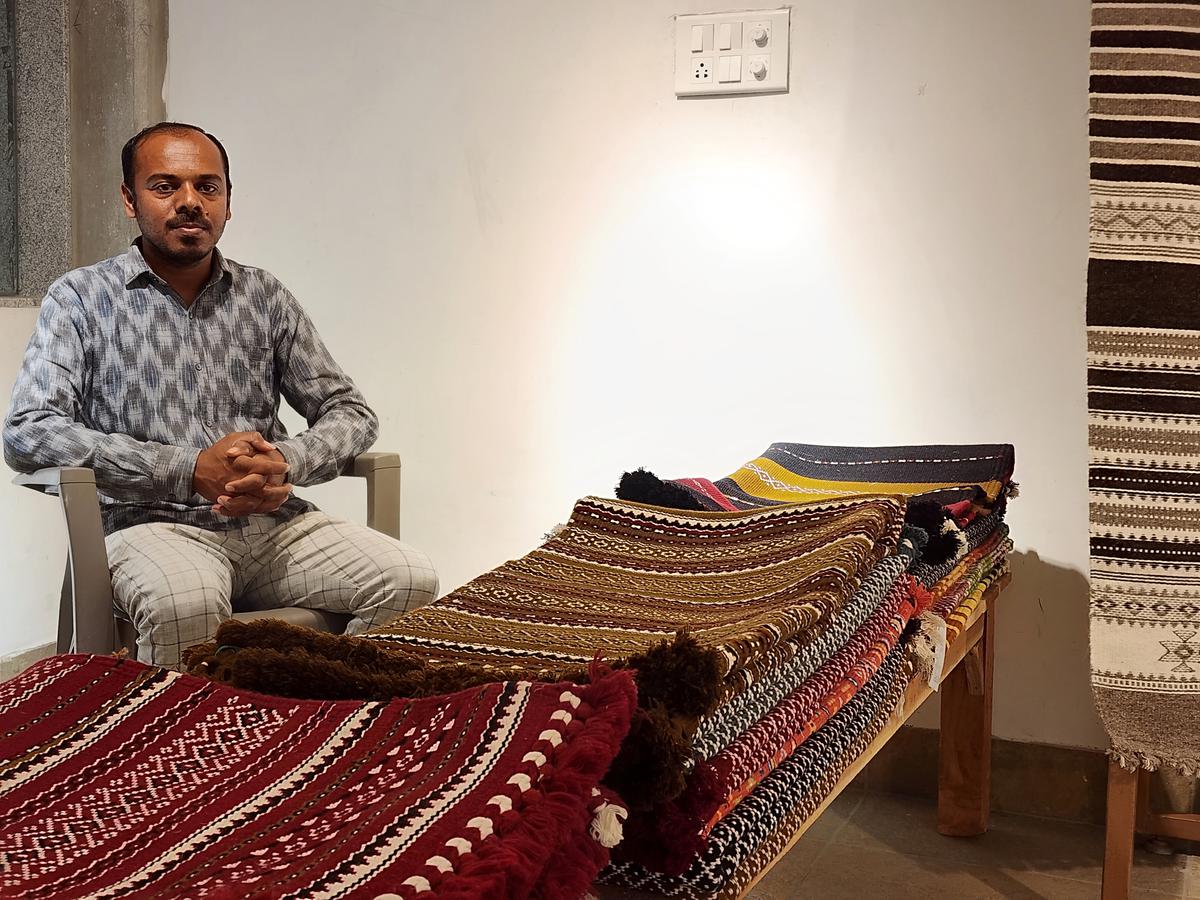
Prakash Narain Sijju from Bhujodi
| Photo Credit:
Special arrangement
Prakash Narain Sijju from Bhujodi, Gujarat, proudly displays the carpets woven by his family and a team of weavers who draw from the traditional motifs of the communities in Kutch. A third-generation weaver, he honed his skills at Kala Raksha Vidyalaya. Prakash Sijju’s great-grandfather took to carpet weaving. Prakash and family incorporated design and marketing suggestions from organisations such as Khamir. Woolen and cotton carpets that are naturally dyed remain their specialty, and they mentor younger weavers in Bhujodi.
Designs are often inspired by desert fauna and flora. Showing a carpet that has cactus-like motifs from the white sands of Kutch, he says, “It takes time to weave such motifs. During the Rann of Kutch festival, there is huge demand from tourists for Kutch products and many weavers pass off printed or synthetic materials to cash in on them. Those who follow the traditional techniques of weaving and dyeing create heirloom pieces.”
The artisans will display their creations at CCT Spaces, Banjara Hills, Hyderabad, on February 24 and 25.


